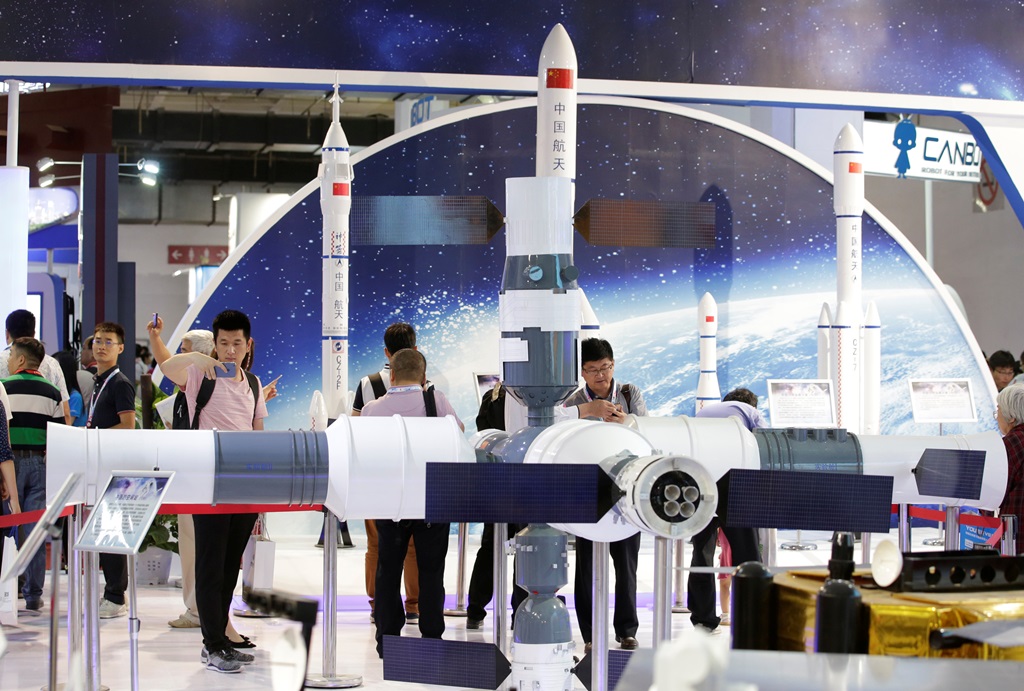
In 2015, China announced the government programme “Made in China 2025,” which aims for it to become a leader in the high-tech industry. One element of it is acquiring high-tech from abroad, especially from the U.S. and EU. In recent years, there have been concerns about transactions involving Chinese investors. For example, in 2016, a Germany-based producer of industrial robots, Kuka, was taken over but the purchase of Aixtron, a chip supplier, was eventually blocked by the U.S. Attempts to take over technology companies or strategic infrastructure are even greater challenges for the U.S. and EU given that in China there is a law that requires Chinese companies to cooperate with their country’s authorities. The U.S. and EU reaction is to try to increase the control of investment activity, including the possibility of blocking it.
U.S. Actions
Since 1975, the Committee on Foreign Investment in the United States (CFIUS), an interagency panel chaired by the U.S. Treasury Secretary, has been reviewing transactions in terms of national security. In 2017, the reform of the committee was initiated and it included increasing the scope of operations to give it more effective control over the export of innovative solutions. On 13 August 2018, U.S. President Donald Trump signed the Foreign Investment Risk Review Modernization Act (FIRRMA) and the Export Control Reform Act (ECRA).
FIRRMA extends the committee’s jurisdiction. Transactions leading to the acquisition by foreign entities of a company that operates on the U.S. market (a U.S. business), which includes any enterprises that provide services or sell goods in and to the U.S., may be reviewed. This gives CFIUS the right to investigate transactions involving even companies from other countries that meet these criteria. The committee will be able to examine all foreign investments in sensitive sectors, such as in critical technologies and infrastructure, as well as those involving the personal data of U.S. citizens. Some greenfield investments (e.g., real estate near military installations or government buildings) and private equity (such as in unlisted companies) also may be reviewed. The bill introduces mandatory declarations to CFIUS when a foreign investor is associated with the authorities of another country (e.g., a sovereign wealth fund) and obtains “significant shares” (more than 10%) in a U.S. business operating in “sensitive sectors.” The phrase “emerging and foundational technologies” was added to the definition of critical technology. A specific definition will be established in the course of CFIUS’s work. It is assumed that it also includes robotics and 5G technology. The second act, ECRA, creates a mechanism to identify and control the sale of modern technologies abroad. ECRA, therefore, complements FIRRMA, which only applies to investments.
EU Actions
In the European Union, the screening system is decentralised and based on national laws. Only 12 EU countries (including Poland) have a control system for foreign direct investment (FDI). So far, there has been no formal consultation mechanism with the European Commission (EC) or between the Member States. At the beginning of 2017, the governments of Germany, France, and Italy presented an initiative to set up a screening mechanism at the EU level. They indicated the possibility of the purchase of strategic technologies by entities from non-EU countries and the lack of instruments to prevent these practices. On 13 September 2017, in the State of the Union address, EC President Jean-Claude Juncker pointed to the need to reconcile the EU’s openness with the protection of its strategic interests. A day later, the EC presented a proposal regarding the regulation of FDI in terms of the impact on security and public order in the EU.
On 20 November 2018, the EC, the EU Council, and the European Parliament (EP) reached a political agreement on the framework of a new FDI mechanism. It does not provide the EU with one uniform system, instead improves cooperation between the EC and the Member States. A requirement was introduced to exchange information on planned FDI related to critical infrastructure (physical or virtual, such as information technology, or IT, systems) and a wide range of strategic sectors, such as artificial intelligence or transport. Transactions that may threaten supplies to the EU of selected goods, such as raw materials and food, or the security of citizens’ data, are also to be checked. At the request of the EC, the states will be obliged to share data on, for example, an investor’s asset structure or the method of financing the investment. When assessing FDI, links between an investor and the government of a third country should be weighed.
The EC will be obliged to issue non-binding opinions on the impact of FDI on projects and programmes in the EU interest, including research (e.g., Horizon 2020), space (e.g., Galileo), transport (e.g., TEN-T), energy and telecommunications, and this list can be extended. The EC can also present an opinion on the impact of FDI on security and public order in one or more Member States. The final decision about accepting or blocking an investment is left to individual member governments. In the case of action contrary to an EC opinion, the state must justify its decision. Member States will also be able to decide whether to introduce their own national screening system (besides the one on the EU level), maintain the current one, or stay without it. No matter the mechanism, each must follow certain criteria, including the principle of non-discrimination, confidentiality, and the possibility to appeal a decision to a court. New regulations about the EU screening must be approved by the EP and the EU Council. The mechanism may be adopted at the beginning of 2019 and will come into force after an 18-month transition period.
Perspectives
The changes to CFIUS’s scope and the implementation of the EU screening mechanism are meant to facilitate protection against risky investments (not only Chinese) in the U.S. and the EU. They may strengthen cooperation between both partners to increase systemic compatibility and regulatory cooperation.
Mainly, the measures encourage the exchange of information on enterprises and investments, provided by the CFIUS changes as well as the new EU regulations. The cooperation could also include tailoring screening mechanisms to protect global value chains in which both EU and U.S. companies are involved. In the U.S. screening, there is the possibility to streamline the review procedures, such as for U.S. allies. Among the challenges will be the differences in both systems: the U.S. mechanism is centralised while the EU’s relies on the Member States. Other challenges concern the differences in the scope of competences between CFIUS and the EC and in the introduction of mandatory investor declarations. There may also be difficulties in identifying investor ownership links, including with a third government, or in determining which sectors are considered critical. It is also possible that some EU countries that have favourable policy towards China or need capital may make decisions that favour external investors such as the Chinese.
In the regulatory dimension, WTO reform is another area for cooperation, including in changes concerning the impact of state subsidies for companies and the protection of intellectual property on investment activities. A challenge here might be China’s opposition to such reform, as seen in the latest proposal for changes to the WTO presented by China in November 2018. The U.S. and the EU, along with other countries sharing their concerns (e.g., Australia), could also work together to create global investment control rules.
China’s authorities have criticised the CFIUS changes, but the decision on the EU screening has not been officially repudiated. China, in the face of its trade war with the U.S., may be counting on EU countries’ support. The introduction of the screening mechanisms may have a short-term impact of lower activity in the EU among investors from China as they check the effectiveness of the system.
The regulations at the EU level may benefit Poland in the form of more efficient information flow and greater transparency, which will facilitate the assessment of an investment, especially in terms of the involvement of third-country governments (e.g., Russia). The similar positions of the U.S. and the EU also may help repair transatlantic relations, crucial for Poland but strained in part by trade disputes between the larger partners.








